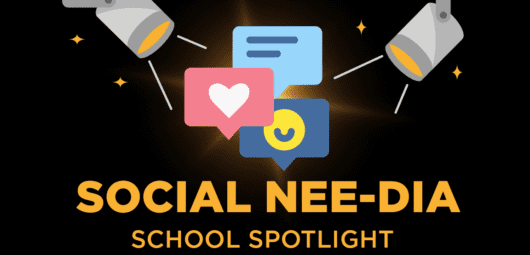Achievement, Motivation, and Engagement Improve When Students Set Their Own Goals: Here’s How to Do It

Research suggests when students set their own academic goals they experience greater achievement and motivation. My personal classroom experience supports this assertion that students who are engaged in setting and meeting their own learning goals are highly motivated to work. Students who participate in goal setting learn how a growth mindset leads to higher achievement. They recognize that they are owners of the learning process. Setting goals helps them understand when they have met their learning targets and where they are in terms of mastery.
So, how do we get them started?
Once you have selected the power standards that will guide your students’ learning, students can now develop their own ways to show their evidence to prove mastery. Students need to know what the power standards are and what evidence the teacher will accept as mastery. This allows the student to see quality examples of success criteria.
Teachers can start by sharing rubrics of success criteria for each of the power standards. A rubric allows students to evaluate their progress while working on a project. Students can base their understanding of a power standard by looking at the rubric’s levels of performance. Because this is a rubric designed to help understand the success criteria, no point values should be assigned. Students will need to be able to see where their performance lies within the rubric and not be sidetracked by the number of points.
Rubrics can be created before the project begins, but if the projects are student-centered (meaning they are choosing the focus), rubrics can also be created with the student and teacher together. Together, the student and teacher determine what the level of success will look like when the project is complete.
After the success criteria has been shared and is understood by the student and teacher, the student identifies “Where am I now?” on the rubric. With descriptive feedback by the teacher and using the student’s past work, the student now understands which parts of the rubric are still not mastered. At this point, the student sets personal goals for meeting the rubric’s success criteria.
During this part of the process, it is time to leverage parental support. The student will articulate to the parents what the project is and solicit their assistance in selecting goals related to the power standards. Parents can select goals they can support at home and discuss the ones that may be out of their reach.
Once the student has set their goals, it is time for the student to create an action plan using statements that begin with a verb. These statements give the student a place to start and help to create a timeline for when the student should complete the work. Within the timeline, the student places check-ins with the teacher to get feedback on the progress the student has made. This feedback is extremely important to keep the student on track to completion but also to be sure the student is keeping the power standards at the center of the learning process. Students build in ways to track their own progress as well.
The teacher looks for ways to celebrate the student’s progress. Big wins are celebrated by the student, the parents and the teacher. Celebrations are meaningful bits of information that support the student and their learning. Words of praise, handwritten notes and coloring in a box on the action plan are all ways to celebrate a student accomplishing one of their goal statements. Meta-researcher Dr. John Hattie suggests making the learning visible by hanging goals on the wall and celebrating achievements with everyone as the learning progresses.
Throughout the process, it is important for both the teacher and the student to have time to reflect. Build in time to think about where the student started in their learning and to look at where they are now. Recognizing that those tiny bits of growth over time have added up to a significant change in learning will motivate students to continue to work. Reflection is also a time to take a bit of a breather, look at the goals that were made, and then to determine if the action steps need modification before moving on.
Student goal setting is a skill that is enduring, relevant, has leverage and is essential for the future. Not only are teachers teaching content, they are also helping students learn how to set and achieve goals for themselves.
Dr. Terri Steffes is a trainer and field support representative for the Network for Educator Effectiveness and an educational consultant for the Heart of Missouri Regional Professional Development Center. She is a retired Missouri school principal and teacher.
The Network for Educator Effectiveness (NEE) is a simple yet powerful comprehensive system for educator evaluation that helps educators grow, students learn, and schools improve. Developed by preK-12 practitioners and experts at the University of Missouri, NEE brings together classroom observation, student feedback, teacher curriculum planning, and professional development as measures of effectiveness in a secure online portal designed to promote educator growth and development.


